Edgecraft: Enhance Your Creativity by Thinking Inside the Box
Explore the areas at the edge of your knowledge

A few weeks ago I had the opportunity to visit WET Design. I learned about WET from one of my colleagues at Harvey Mudd who suggested that I reach out to them to learn more about their unique approach to innovation. My colleague connected me with Helen Park, WET’s Senior Vice President and she was kind enough to host me for a tour of WET’s campus in Sun Valley, CA.
While you may not have heard of WET, you have likely experienced or at least heard of some of their creations. WET is best known for their iconic fountains, but fountain really doesn’t really do it justice. These are entertainment creations combining water, light, sound, and even fire. Check out the video below or their website to get a feel for the work that they do.
WET’s take on innovation
As Helen showed me around WET’s impressive campus, we talked a lot about WET’s approach to innovation. While your prototypes won’t be at the same scale as WET’s, their operating principles still have a lot to teach us about the prototyping mindset.
Something that impressed me is the way that WET embraces innovation and creativity under pressure. Given the contract- and project-driven nature of their business, it would be easy for the culture to be a conservative one, but it seems that they have found a way to embrace creativity and the prototyping mindset even in the midst of this challenging environment where there is always a looming deadline that needs to be hit.
For example, they understand that to be creative, humans need autonomy which is why they encourage their employees to use a fraction of their time each week to embrace new ideas which are not related to their current project. They also have intentionally designed their working space to foster interactions within teams using custom desks arranged in circles with a table at the center so that teams can easily turn around from their computers to meet and brainstorm together.
WET provides yet another example of how broadly the prototyping mindset applies. You might think that the creative process that is part of the prototyping mindset is only applicable in scenarios where there is plenty of time and no hard deadlines, but WET shows by example that this is not the case.
Edgecraft: Think inside the box
As we were walking around WET’s campus Helen shared an idea with me that has really been resonating over the past few weeks: Edgecraft. As I understand it, the big idea behind Edgecraft is to combine what we already know in new ways. In other words, think inside the box in new ways by leveraging our existing expertise instead of trying to think outside the box and innovate in areas where we have less pre-existing knowledge.
The power of vertical integration
It’s one thing to embrace the idea of Edgecraft, but it’s another to actually create the supporting infrastructure to make it successful. This is another area where the intentional design of WET’s company structure is apparent.
As you walk through their facilities, it is clear that WET operates with a very large dynamic range and has been very thoughtful about pursuing vertical integration wherever possible. For example, not only do they do their own concept art and modeling on-site before they build out the full-scale parts, but they also handle all the photography and cinematography in-house as well. This gives them deep control over all the details of the experience from conception to installation.
This broad dynamic range also applies to their manufacturing capabilities. As Helen walked me through building after building of manufacturing equipment, I was blown away by the capabilities that they have built up over the past nearly 40 years that the company has existed. When they would land a new contract for a project that needed a manufacturing technology that they didn’t already have, they would invest in the equipment to add to their existing capabilities instead of contracting it out.
It’s this vertical integration that provides the raw material for Edgecraft to really thrive. You might want to explore potential creative connections between the various skills that you have, but without a broad base of skills and tools to make it happen, it is hard to make that goal a reality.
Where can you leverage Edgecraft?
Edgecraft highlights the value of building a broad foundation and resisting the urge to specialize early. By continuing to embrace curiosity and build skills across a wide set of domains, you are setting yourself up to easily leverage concrete skills to create new connections.
This week I want to encourage us to consider where the idea of Edgecraft might apply in your life. First, start by sitting down and writing out a list of skills that you have or things that you know a lot about. For me, this list might include:
Electrical engineering
Optics
Coffee
Pizza making
Technology and computers
Programming
Teaching
Cycling
Reading books
Writing blog posts
Leading groups
Being a dad to young kids
Fixing things
In making this list, don’t limit yourself to things that you do only at work or for leisure. The point is to broadly embrace your skills and knowledge across all aspects of how you spend your time. This list should include both skills where you have professional training, but also your hobbies.
After coming up with this list, start to experiment with Edgecraft by asking “how might I” questions that encourage you to think about ways to connect these different interests. For example:
How might I connect my skills in optical and engineering with my love of reading?
How might I connect being a dad to young kids with my enjoyment of writing and experience forming and leading groups?
How might I connect my love of coffee with my background as an electrical engineer?
As you start to form these questions, I hope you will experience the same spark of curiosity that I did when I read and considered these questions. Thinking in this way helps you to see the unique ways that you are built and offer avenues for you to more deeply explore possible opportunities for you to create something new while deepening your existing interests.
Where does the idea of Edgecraft resonate with you?
I hope that you’ll take some time at lunch today to grab a piece of paper or open a text file on your computer to do this quick exercise. If you do, would you send me a note to let me know how it went and if it sparked any new ideas for you? You can either reply directly, leave a comment, or shoot me a note at joshbrake@substack.com.
And if you’d like to go a bit deeper, I’d encourage you to join the Prototyping Mindset Community to explore ways to interact with others who are also passionate about deepening their own prototyping mindset. This community is only open to paid subscribers, but I’m running a free trial offer right now. And if you’re a student, you can join for a discounted rate of just $1/month.
The community is starting small, but I hope that you’ll join us if you are interested. To join, simply upgrade to a paid subscription and you’ll get instructions sent right on over.
The Book Nook
I finished reading Robert T. Kiyosaki’s Rich Dad Poor Dad about a month ago. This is one of those famous personal finance books that I’ve had on my list for a while.
This book was a fun and engaging read, with lots of great stories and anecdotes. But the whole book was worth reading for one idea alone: the idea of assets vs. liabilities. Robert has a way of breaking down the generation of wealth into a simple formula: use your income to acquire assets, not liabilities. And he helps to delineate the difference between them in a clear way.
In short, Robert breaks down the process of generating wealth using the diagram above. The left shows a typical middle-class cash flow pattern. Money comes in through a job via salary and then pays liabilities and expenses. However, nothing is left for building assets. In comparison, the diagram on the right shows how the rich generate wealth. They use their salary from a job to build assets, which then create more income to cover their expenses and liabilities.
If you’re looking to get some perspective on how to rethink your finances or a framework for how to teach your kids about money, this one is well worth your time.
The Professor Is In
This last Saturday we loaded up our class of Harvey Mudd Engineering sophomores to travel down to the beach at Dana Point, CA for launch day. The students have been working diligently on their autonomous robots over the past month and a half and launch day is always a great way to celebrate their growth throughout the semester.

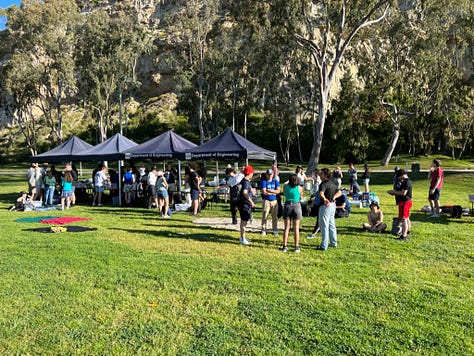
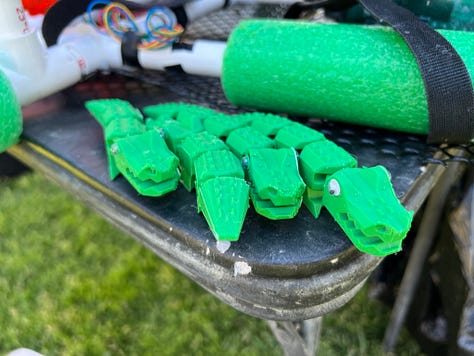
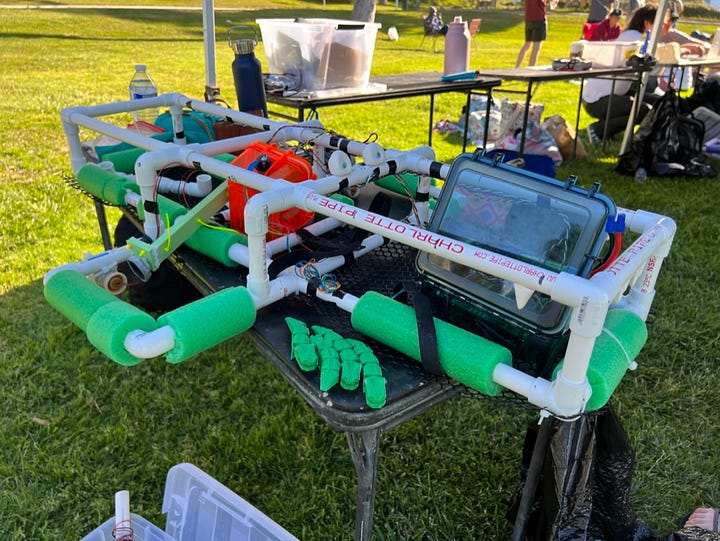
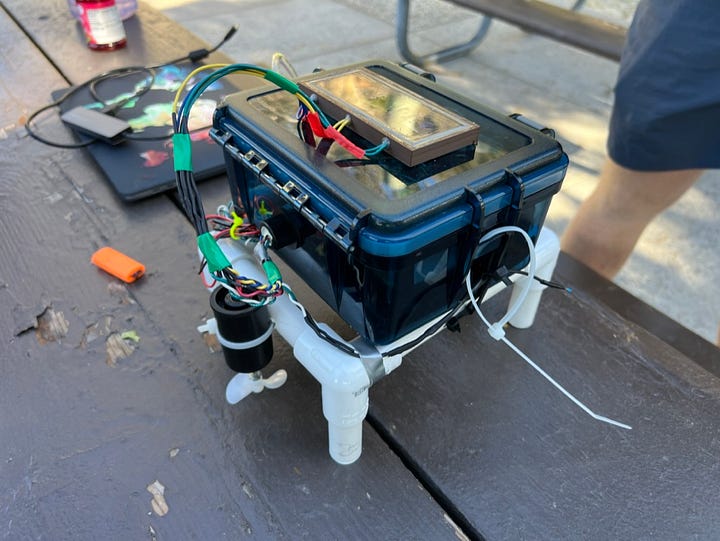
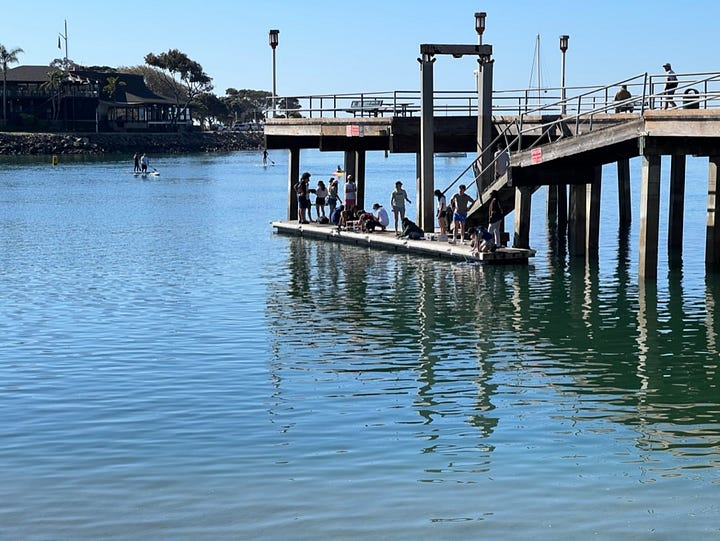

Leisure Line
With the weather turning warmer (and this rainy SoCal winter subsiding), it’s been great to be getting back into a regular rhythm of pizza again on the weekends. I really feel like I’m dialing in my potato rosemary pie!
Still Life
A picture from the pier at Dana Point looking back toward the beach and the cliffs. Just a beautiful place and we couldn’t have asked for a nicer day!



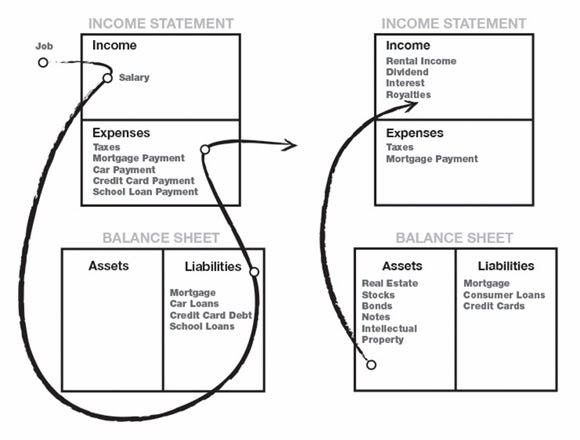


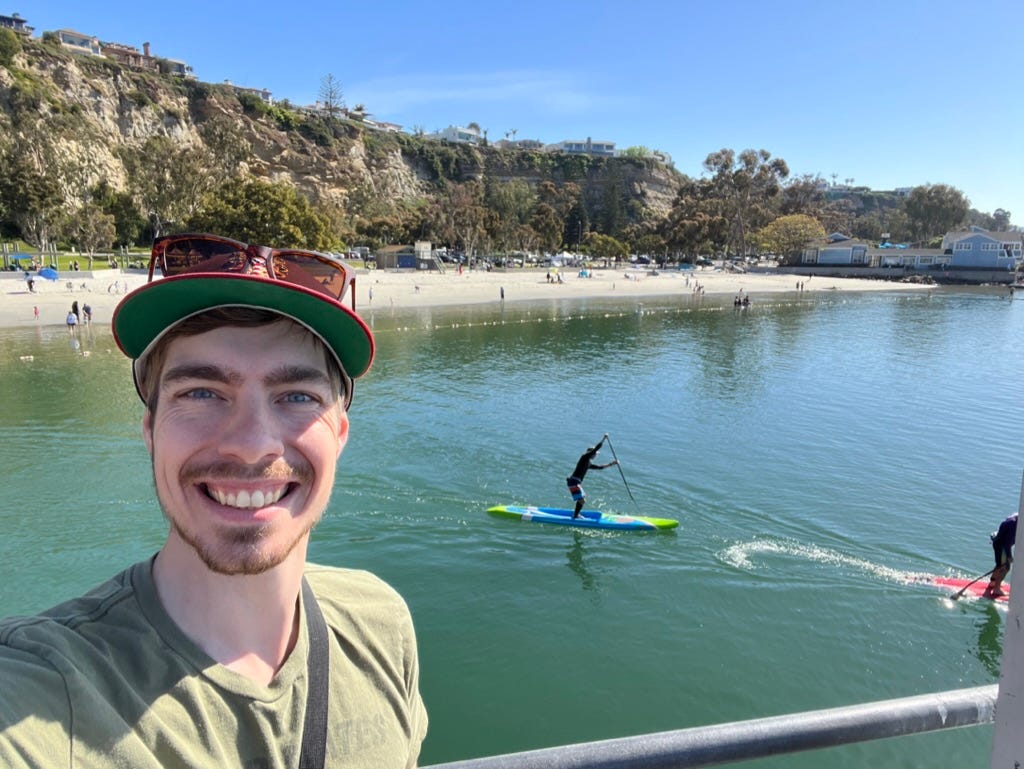
Great post, Josh. I've been thinking a lot about what, in my own head, I've categorized as "creativity versus originality," and your description of "edgecraft" is going in that mental folder.